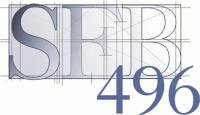|
Project
C2:
Symbols, Rituals, and Gestures in Early Modern Conflicts and Everyday Acting
| Abstract |
The project studies acts of symbolic communication in conflicts and selected everyday situations in exemplary regions as well as in images from the 16th to the 18th century. It advances work, in its third phase, on the student culture of Early Modern Times from a comparative European perspective, while concentrating on further points of emphasis. Initially, the goal is to analyse forms and contexts of symbolic communication in the student culture at the universities of Freiburg (Breisgau) and Cambridge in Early Modern Times. The analysis asks if and to what extent the different university structures in England and Germany influenced the way students saw themselves, and what impact they had on students' habits and customs and their symbolic and ritual staging. A further aspect of the project investigates hospitality and conviviality of the learned world at the universities of Freiburg and Uppsala with particular consideration to their ritual elements and symbolic charging. At the centre of this third focus of research are primarily pictorial sources of Early Modern Times. Their interpretation pays special attention to the symbolism of objects and signs as well as to the body language of persons depicted in their practices of self-representation and communication.
|
